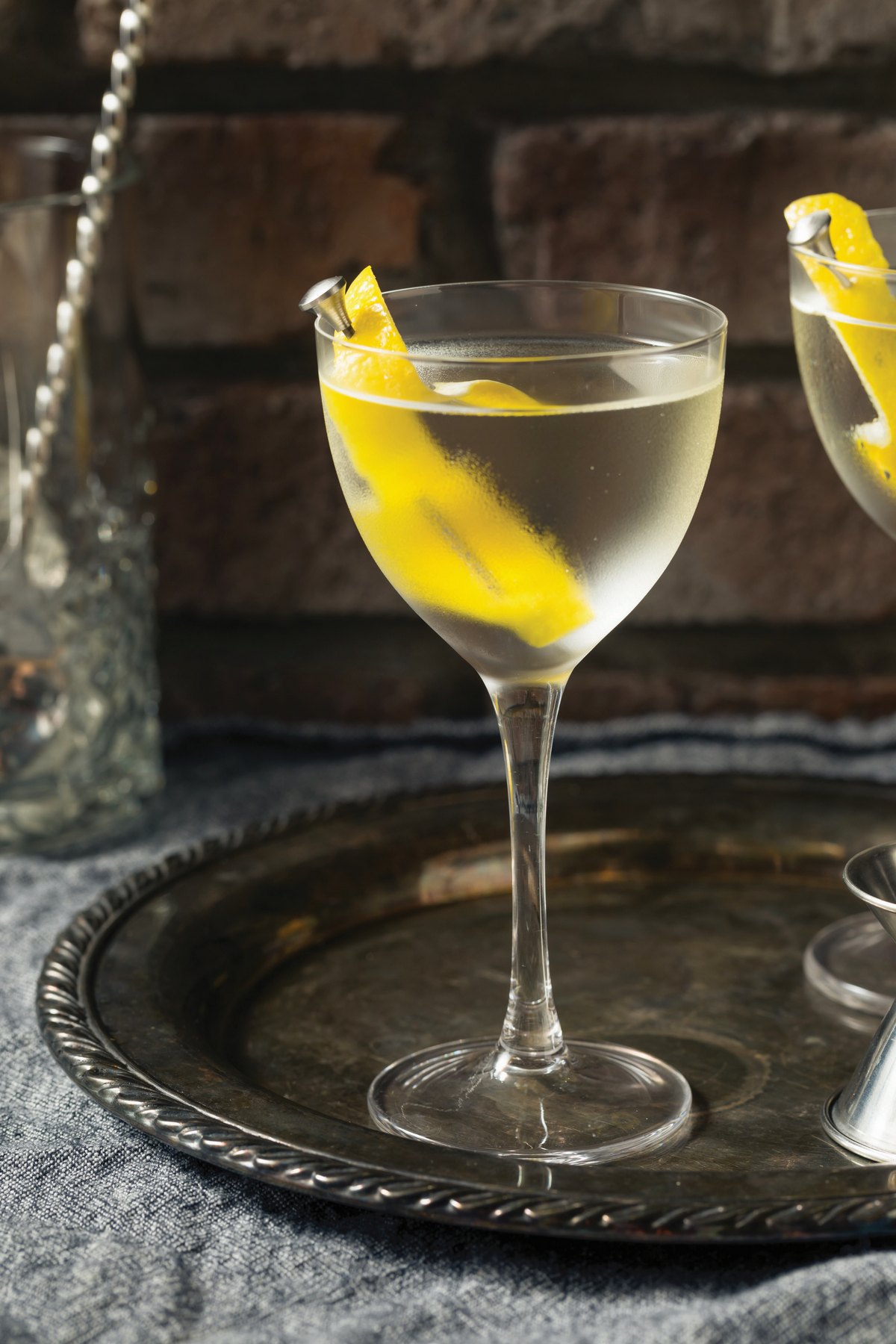
The Adonis has become as immortal as its namesake; the Coronation has achieved royal status; the Bamboo is evergreen. So why have we left the Jabberwocky to slumber? When it comes to sherry-and-aromatised wine drinks, did we pay too much heed when Lewis Carroll said, “Beware the Jabberwock, my son! The jaws that bite, the claws that catch!”
While its namesake may be scary, the cocktail is not. An equal parts combination of gin, manzanilla or fino sherry and Lillet with a couple of dashes of orange bitters, it’s essentially a martini with training wheels – lower in ABV, floral, with a lick of salinity and juicy citrus notes. It’s the perfect aperitif and makes me, for one, chortle with joy.
First appearing in Harry Craddock’s ‘Savoy Cocktail Book’ under the name ‘Jabberwock’, it was listed as 2 dashes orange bitters, 1/3 dry gin, 1/3 dry sherry, 1/3 Caperitif and a lemon twist – alongside a quote from Carroll’s poem. Caperitif is a quinine-heavy South African aromatised wine based on Chenin Blanc and Muscat and infused with many botanicals indigenous to the country’s ‘biodiversity hotspot’, the Cape Floral Kingdom. It obviously had a unique flavour as it is referred to by brand name multiple times throughout the ‘Savoy Cocktail Book’ in a similar way to, for example, Fernet Branca. Sadly, though, production was stopped quite soon after the book’s publication and it moved into the shadowy realms of a ‘ghost ingredient’; a replacement had to be made to recreate any recipes calling for it.
An equal parts combination of gin, manzanilla or fino sherry and Lillet with a couple of dashes of orange bitters, it’s essentially a martini with training wheels – lower in ABV, floral, with a lick of salinity and juicy citrus notes.
This is just what San Franciscan bartender Andrew Meltzer did in his modern interpretation – where the rogue ‘y’ also seems to have been added to Jabberwock. While ‘dry sherry’ is open to interpretation, Meltzer decided to use the salty seaside sherry, manzanilla, in place of the more fruity inland version of fino, and I tend to follow suit. He replaced the Caperitif with Lillet, and the modern iteration was born.
That said, this template works really well in many adaptations. I have used amontillado sherry with richer gins to great effect and other off-dry vermouths such as Casa Mariol Blanco or Regal Rogue Lively White to forefront particular flavour profiles. Caperitif itself has even made a comeback – it does not claim to be a faithful recreation of the early 20th-century version, but Danish mixologist Lars Erik Lyndgaard Schmidt teamed up with South African winemaker Adi Badenhorst to take advantage of South Africa’s unique wine terroir and flora to create a modern reimagining which, I’m sure, would make a very delicious Jabberwocky.
So, dear bartenders, let’s let the Jabberwock, with eyes of flame, come whiffling through the tulgey wood and into a coupe glass near you.
The Jabberwocky
25ml gin
25ml manzanilla sherry
25ml Lillet Blanc
2 dashes orange bitters
Glass: coupe glass
Garnish: lemon twist

